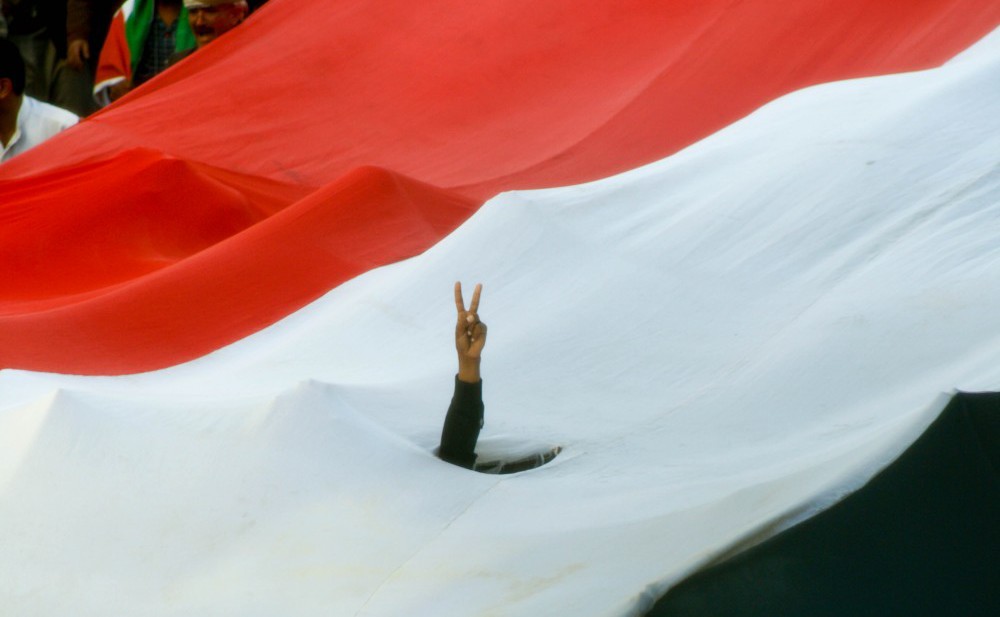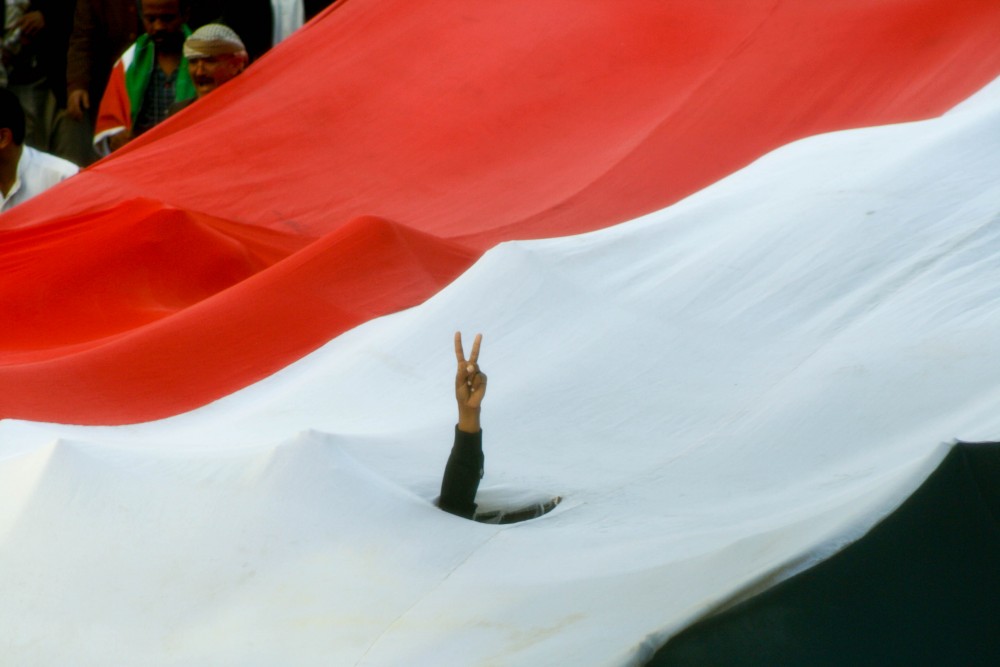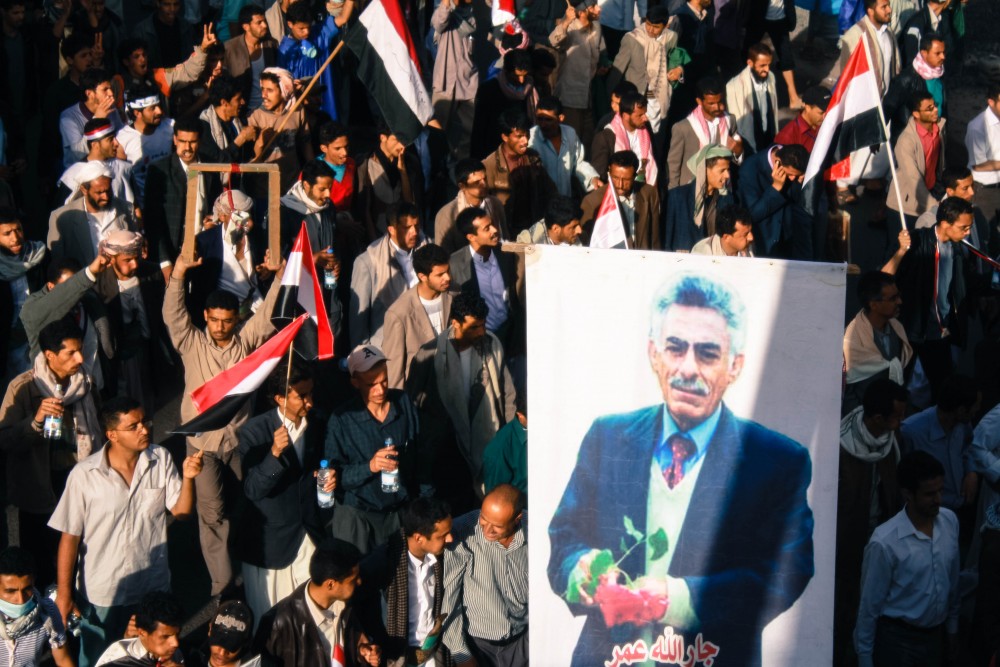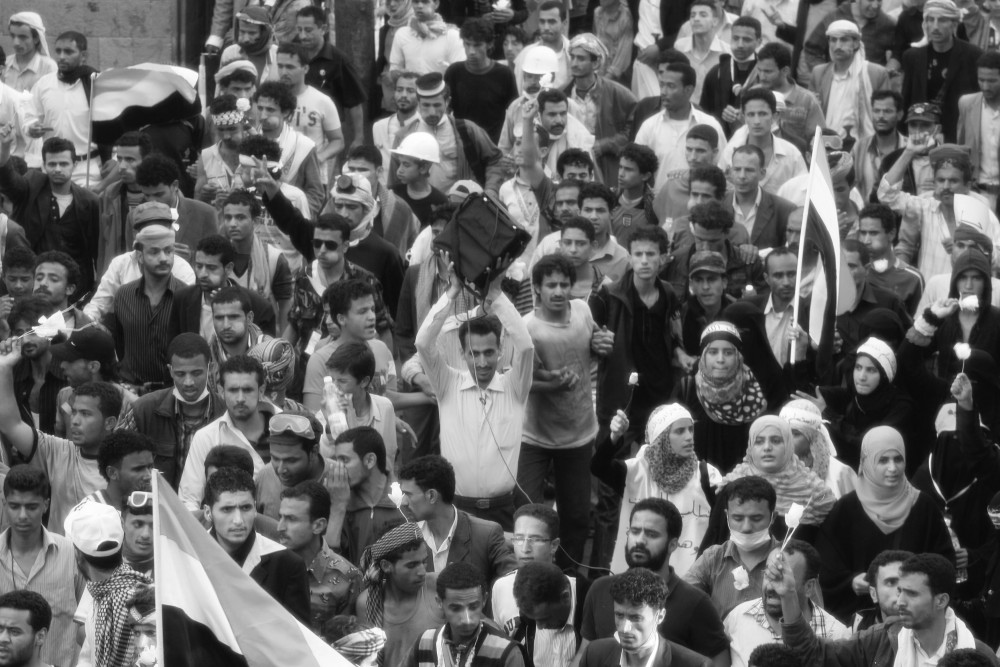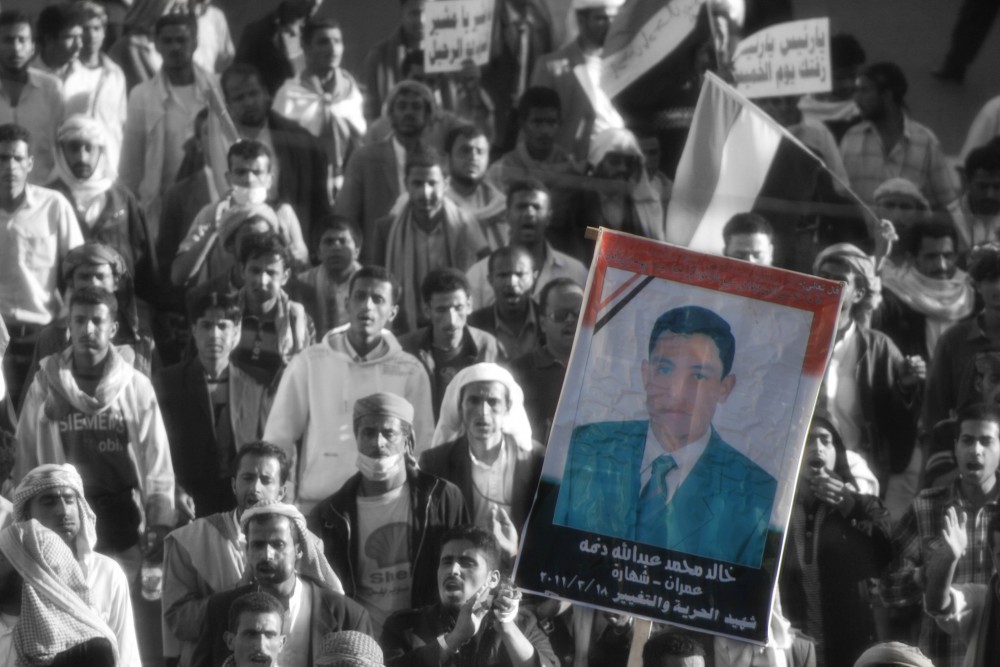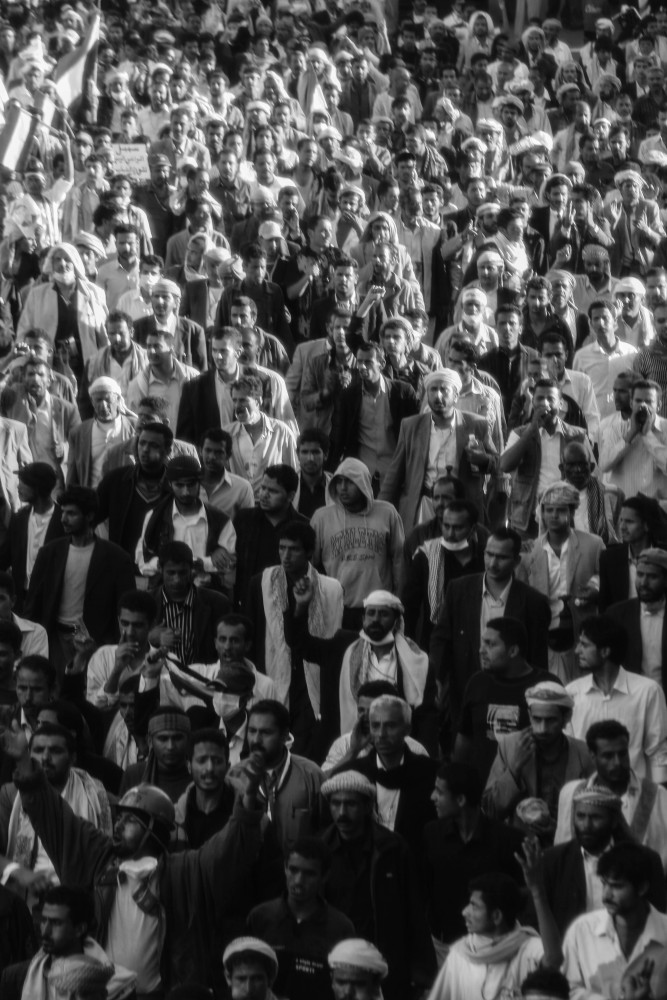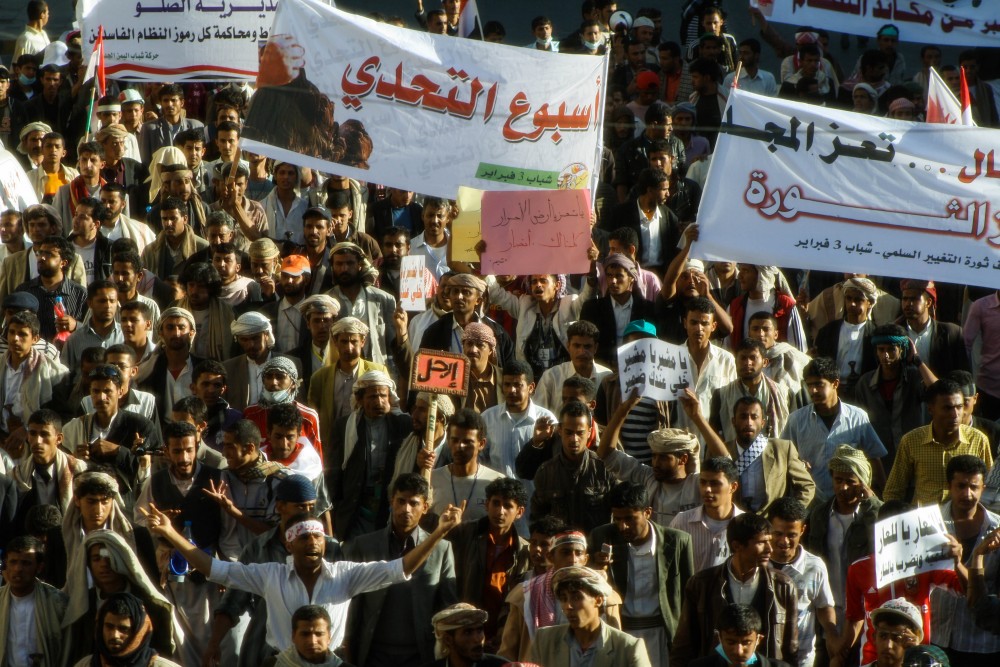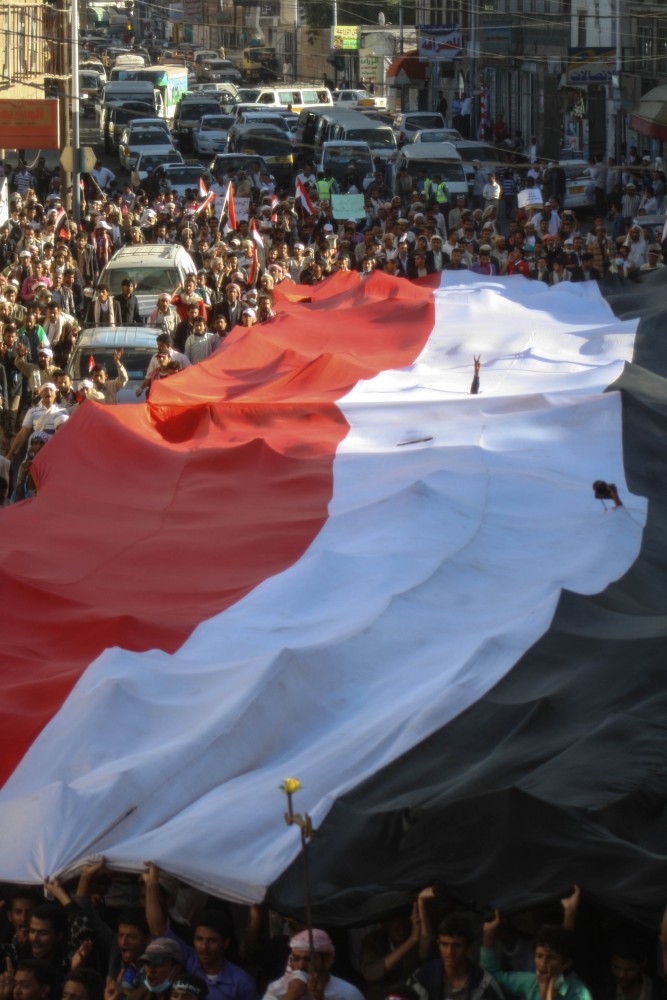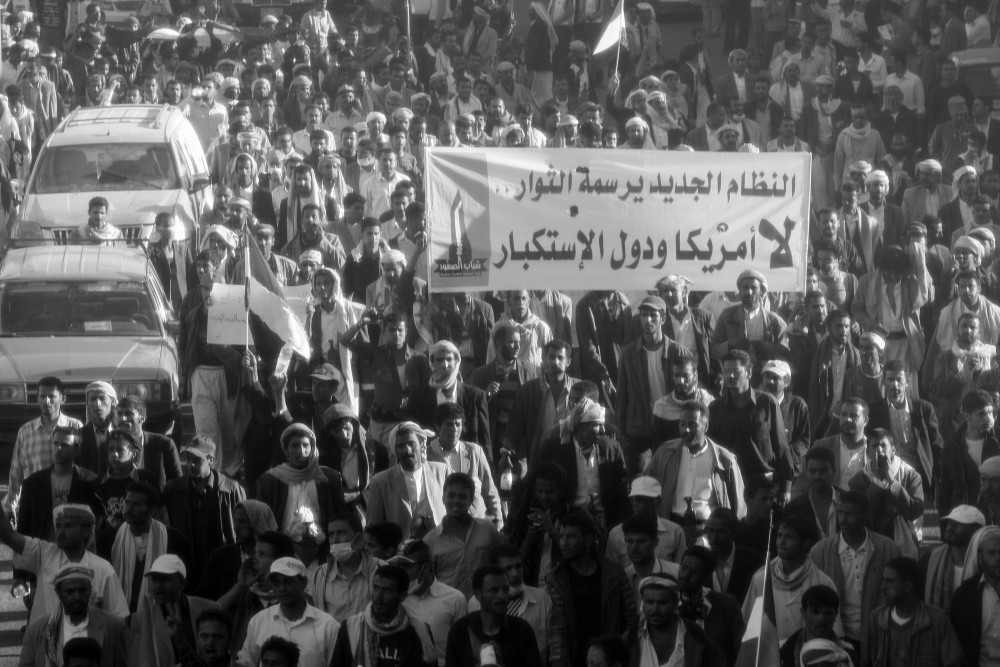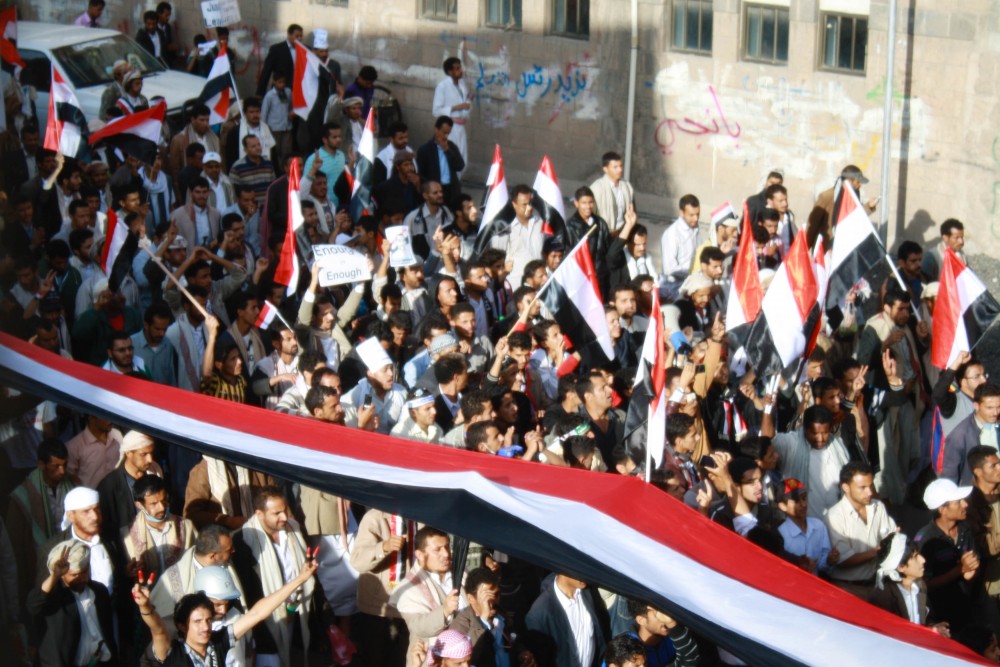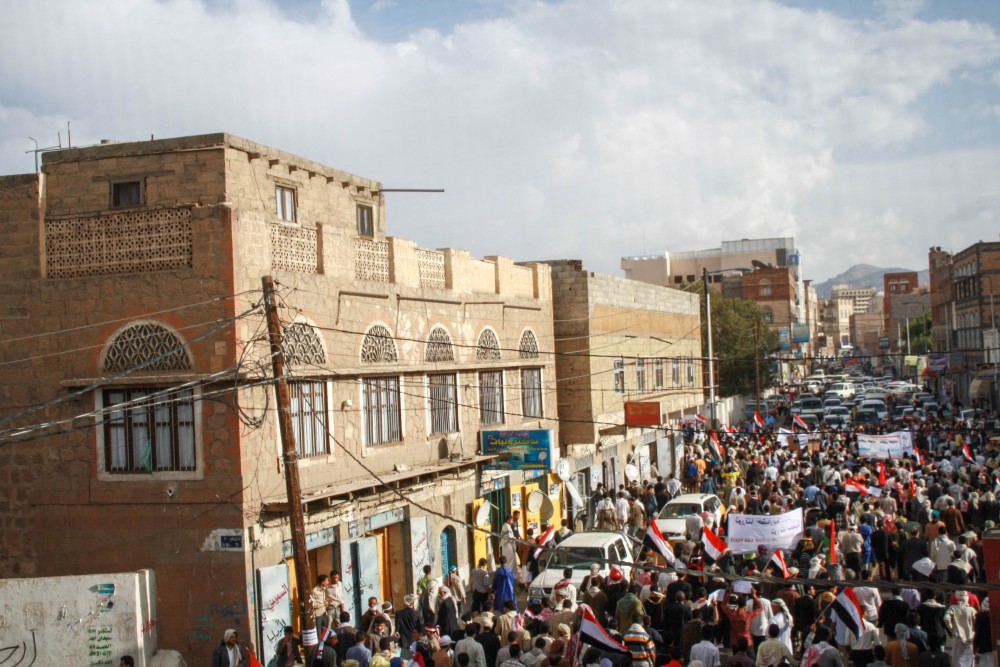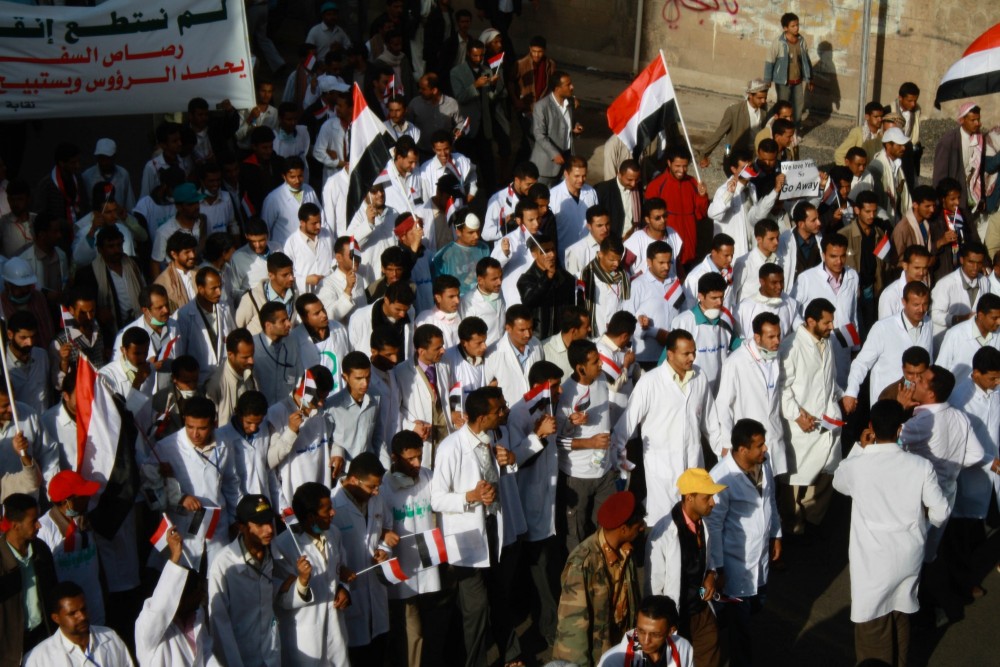What follows is a look back at Yemen’s 2011 Revolution, which was first triggered by a mass desire to change the political structure and put an end to corruption and unemployment. As demonstrations escalated, protesters’ demands expanded to include an end to Yemen’s dictatorial family rule. In February 2012, protesters succeeded in ousting 33-year president Ali Abdullah Saleh — after more than a year of protests and over 2,000 casualties. Since then, former Vice President Abdo Rabo Mansour Hadi has been in power as interim president, guiding Yemen in its transition to a federalist democracy. Although Yemen has struggled in its path toward stability, the revolution has nevertheless brought about some positive results — from the National Dialogue Conference, which ended this past January, to the creation of a national unity government. Recently, as a measure to safeguard this transition process, the U.N Security Council voted to impose sanctions on those who attempt to obstruct Yemen’s path towards change.
The following photos were taken on April 4th, 2011 and September 2nd, 2011 on Zera’a Street in the Yemeni capital of Sana’a.
____________________________________________________________________________________________________
